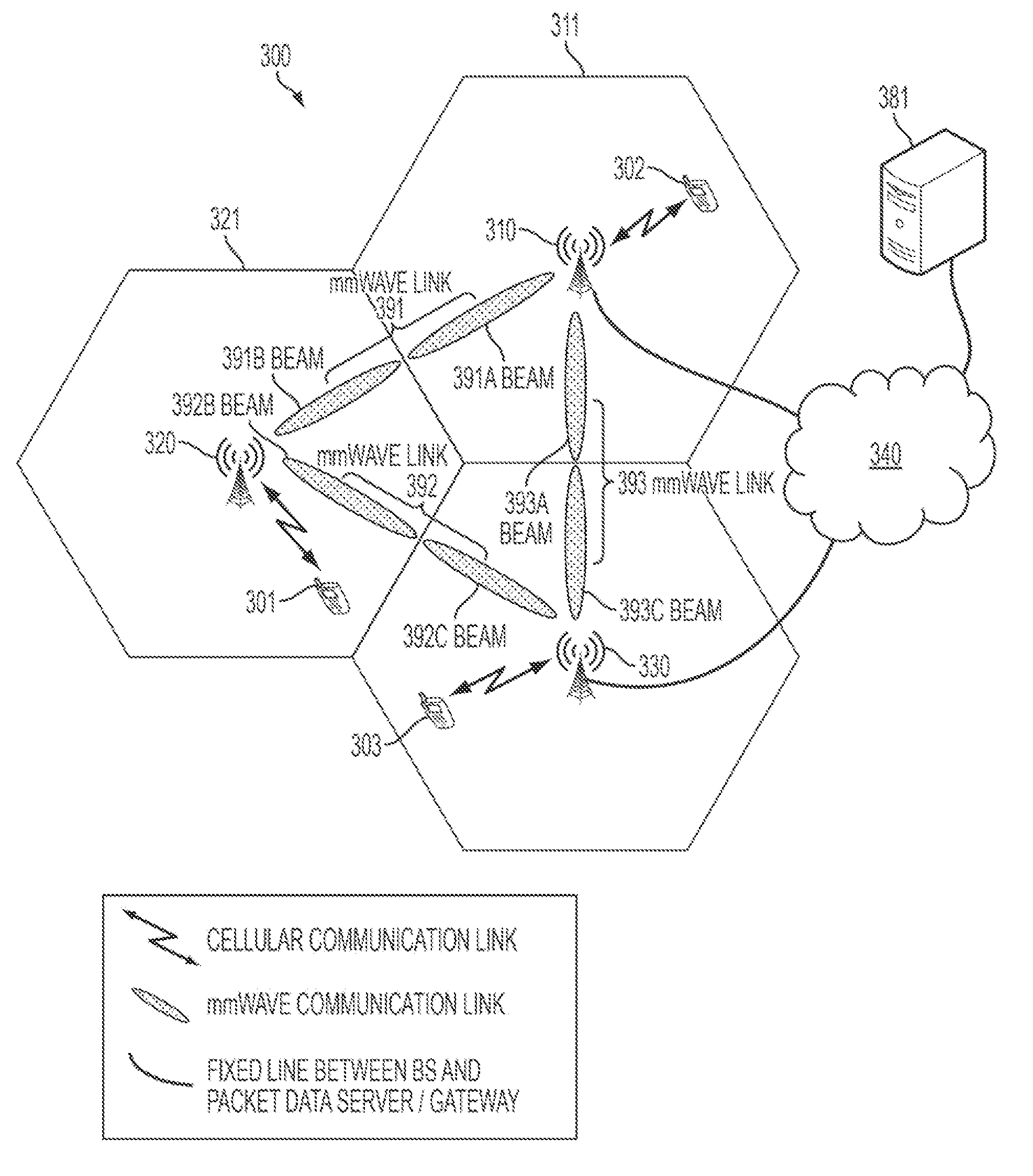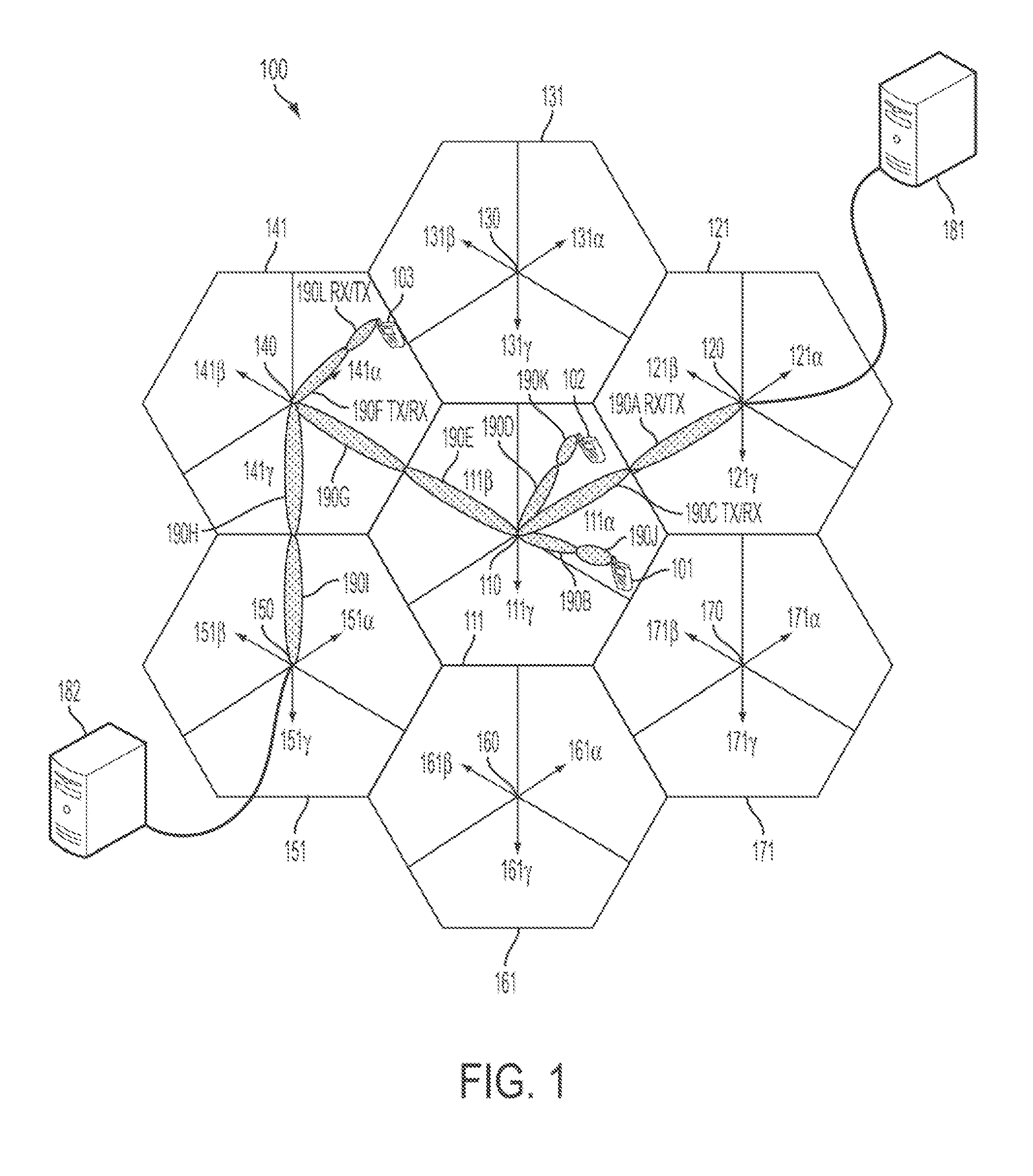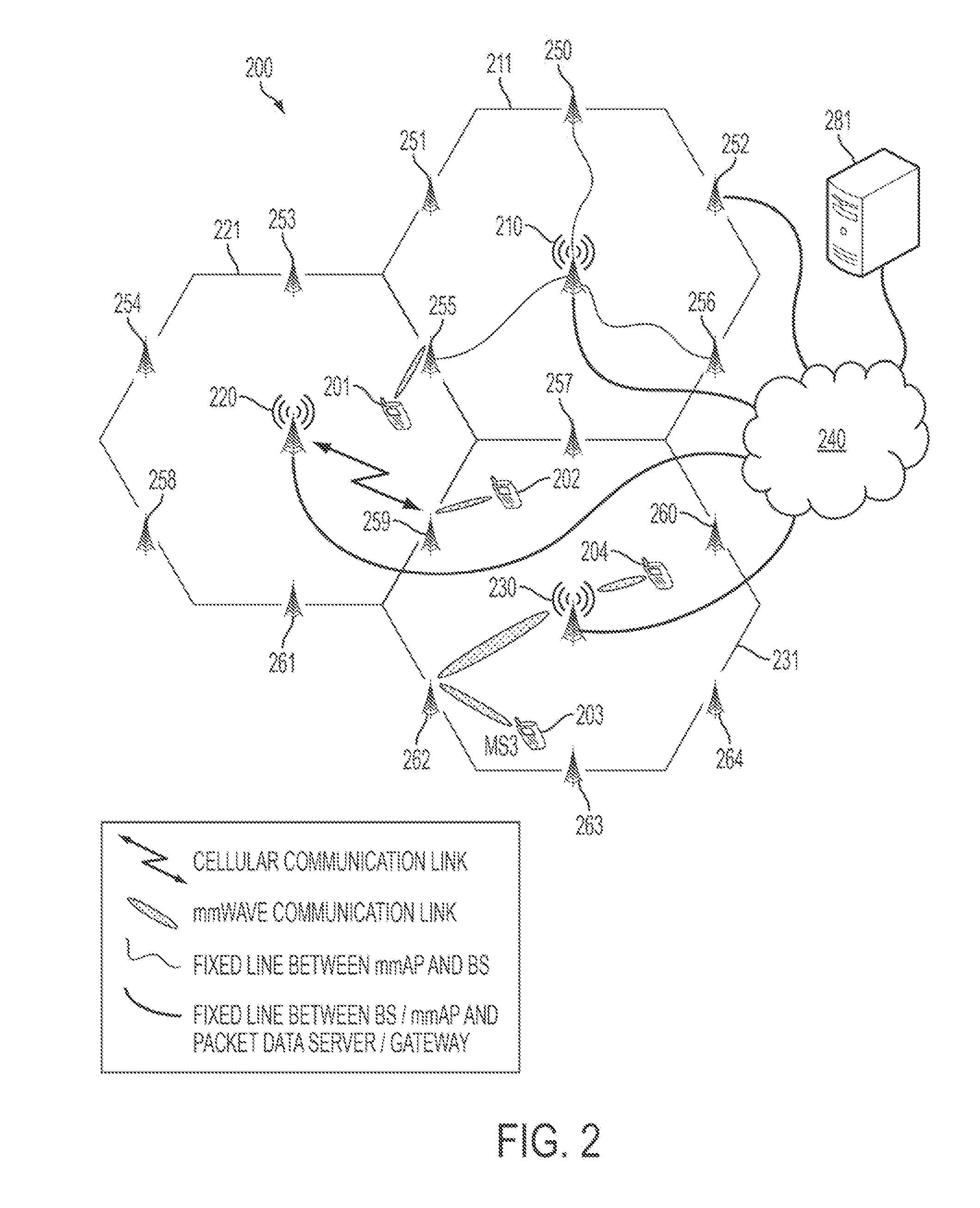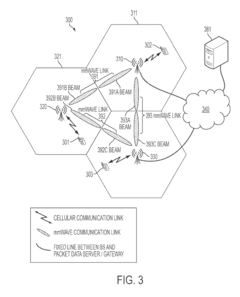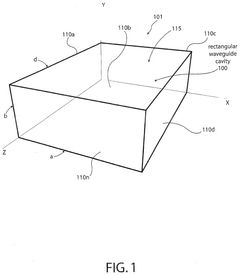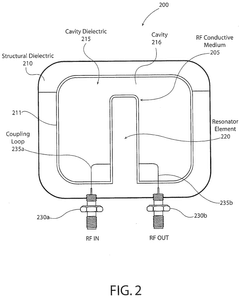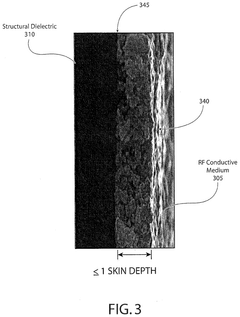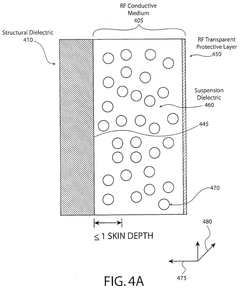Electromagnetic Waves in Telecommunications: Advances and Challenges
JUL 11, 20258 MIN READ
Generate Your Research Report Instantly with AI Agent
Patsnap Eureka helps you evaluate technical feasibility & market potential.
EM Wave Tech Evolution
The evolution of electromagnetic wave technology in telecommunications has been a journey of continuous innovation and breakthrough. From the early days of radio communication to today's advanced 5G networks, the field has witnessed remarkable progress in harnessing the power of electromagnetic waves for information transmission.
In the late 19th century, Heinrich Hertz's experiments with electromagnetic waves laid the foundation for wireless communication. This was followed by Guglielmo Marconi's successful transatlantic radio transmission in 1901, marking the birth of long-distance wireless communication. The subsequent decades saw rapid advancements in radio technology, leading to the development of amplitude modulation (AM) and frequency modulation (FM) broadcasting.
The mid-20th century brought about significant developments in microwave technology, enabling the creation of more efficient and higher capacity communication systems. The invention of the cavity magnetron during World War II paved the way for radar systems and microwave communications. This period also saw the emergence of satellite communications, with the launch of Telstar in 1962 revolutionizing global telecommunications.
The latter half of the 20th century witnessed the rise of cellular technology. The first generation (1G) of mobile networks, introduced in the 1980s, used analog signals for voice transmission. This was followed by the digital 2G networks in the 1990s, which introduced text messaging and basic data services. The turn of the millennium saw the advent of 3G networks, offering significantly improved data speeds and enabling mobile internet access.
The 21st century has been characterized by rapid advancements in wireless technology. The introduction of 4G networks in the 2010s brought about high-speed mobile broadband, supporting video streaming and other data-intensive applications. This era also saw the widespread adoption of Wi-Fi technology, enabling local area wireless networking.
Most recently, the deployment of 5G networks has marked a new milestone in electromagnetic wave technology. 5G utilizes higher frequency bands, including millimeter waves, to achieve unprecedented data speeds and low latency. This technology is expected to enable a wide range of applications, from autonomous vehicles to the Internet of Things (IoT).
Looking ahead, researchers are already exploring the potential of 6G technology, which may utilize terahertz waves and even visible light communication. These advancements promise to push the boundaries of what is possible in wireless communication, potentially enabling holographic communication and high-precision sensing applications.
In the late 19th century, Heinrich Hertz's experiments with electromagnetic waves laid the foundation for wireless communication. This was followed by Guglielmo Marconi's successful transatlantic radio transmission in 1901, marking the birth of long-distance wireless communication. The subsequent decades saw rapid advancements in radio technology, leading to the development of amplitude modulation (AM) and frequency modulation (FM) broadcasting.
The mid-20th century brought about significant developments in microwave technology, enabling the creation of more efficient and higher capacity communication systems. The invention of the cavity magnetron during World War II paved the way for radar systems and microwave communications. This period also saw the emergence of satellite communications, with the launch of Telstar in 1962 revolutionizing global telecommunications.
The latter half of the 20th century witnessed the rise of cellular technology. The first generation (1G) of mobile networks, introduced in the 1980s, used analog signals for voice transmission. This was followed by the digital 2G networks in the 1990s, which introduced text messaging and basic data services. The turn of the millennium saw the advent of 3G networks, offering significantly improved data speeds and enabling mobile internet access.
The 21st century has been characterized by rapid advancements in wireless technology. The introduction of 4G networks in the 2010s brought about high-speed mobile broadband, supporting video streaming and other data-intensive applications. This era also saw the widespread adoption of Wi-Fi technology, enabling local area wireless networking.
Most recently, the deployment of 5G networks has marked a new milestone in electromagnetic wave technology. 5G utilizes higher frequency bands, including millimeter waves, to achieve unprecedented data speeds and low latency. This technology is expected to enable a wide range of applications, from autonomous vehicles to the Internet of Things (IoT).
Looking ahead, researchers are already exploring the potential of 6G technology, which may utilize terahertz waves and even visible light communication. These advancements promise to push the boundaries of what is possible in wireless communication, potentially enabling holographic communication and high-precision sensing applications.
Telecom Market Trends
The telecommunications market is experiencing rapid growth and transformation, driven by advancements in electromagnetic wave technologies. The global telecom market size reached $1.7 trillion in 2021 and is projected to expand at a CAGR of 5.4% from 2022 to 2030. This growth is primarily fueled by increasing demand for high-speed connectivity, the proliferation of smart devices, and the emergence of 5G networks.
Mobile telecommunications continue to dominate the market, with 5G technology at the forefront of innovation. The number of 5G connections is expected to surpass 1 billion by 2023 and reach 4.4 billion by 2027, representing nearly half of all mobile connections. This surge in 5G adoption is driving significant investments in network infrastructure and creating new opportunities for service providers and equipment manufacturers.
The Internet of Things (IoT) is another key trend shaping the telecom market. The number of IoT-connected devices is forecast to reach 30.9 billion by 2025, up from 13.8 billion in 2021. This exponential growth is creating demand for advanced electromagnetic wave technologies to support low-power, wide-area networks (LPWAN) and other IoT-specific communication protocols.
Fixed broadband services are also experiencing steady growth, particularly in developing markets. Fiber-optic networks are expanding rapidly, with global fiber-to-the-home/building (FTTH/B) subscriptions expected to reach 1.6 billion by 2026. This trend is driving innovations in optical communication technologies and creating opportunities for equipment vendors and service providers.
The enterprise segment of the telecom market is witnessing increased demand for cloud-based services and software-defined networking (SDN). The global SDN market is projected to grow at a CAGR of 28.2% from 2021 to 2028, reaching $88.5 billion by 2028. This shift towards virtualized network infrastructure is creating new challenges and opportunities for electromagnetic wave technologies in enterprise communications.
Satellite communications are gaining renewed interest, with several companies launching low Earth orbit (LEO) satellite constellations to provide global broadband coverage. The satellite internet market is expected to grow at a CAGR of 20.4% from 2021 to 2030, reaching $18.59 billion by 2030. This trend is driving innovations in satellite communication technologies and creating new opportunities for electromagnetic wave applications in space-based telecommunications.
Mobile telecommunications continue to dominate the market, with 5G technology at the forefront of innovation. The number of 5G connections is expected to surpass 1 billion by 2023 and reach 4.4 billion by 2027, representing nearly half of all mobile connections. This surge in 5G adoption is driving significant investments in network infrastructure and creating new opportunities for service providers and equipment manufacturers.
The Internet of Things (IoT) is another key trend shaping the telecom market. The number of IoT-connected devices is forecast to reach 30.9 billion by 2025, up from 13.8 billion in 2021. This exponential growth is creating demand for advanced electromagnetic wave technologies to support low-power, wide-area networks (LPWAN) and other IoT-specific communication protocols.
Fixed broadband services are also experiencing steady growth, particularly in developing markets. Fiber-optic networks are expanding rapidly, with global fiber-to-the-home/building (FTTH/B) subscriptions expected to reach 1.6 billion by 2026. This trend is driving innovations in optical communication technologies and creating opportunities for equipment vendors and service providers.
The enterprise segment of the telecom market is witnessing increased demand for cloud-based services and software-defined networking (SDN). The global SDN market is projected to grow at a CAGR of 28.2% from 2021 to 2028, reaching $88.5 billion by 2028. This shift towards virtualized network infrastructure is creating new challenges and opportunities for electromagnetic wave technologies in enterprise communications.
Satellite communications are gaining renewed interest, with several companies launching low Earth orbit (LEO) satellite constellations to provide global broadband coverage. The satellite internet market is expected to grow at a CAGR of 20.4% from 2021 to 2030, reaching $18.59 billion by 2030. This trend is driving innovations in satellite communication technologies and creating new opportunities for electromagnetic wave applications in space-based telecommunications.
EM Wave Tech Challenges
Electromagnetic waves in telecommunications face several significant challenges that hinder their optimal utilization and performance. One of the primary issues is signal attenuation, which occurs as electromagnetic waves travel through various mediums, resulting in reduced signal strength and quality over long distances. This problem is particularly pronounced in urban environments with numerous physical obstacles and interference sources.
Multipath propagation presents another major challenge, where signals reflect off surfaces and arrive at the receiver via multiple paths. This phenomenon can cause signal distortion, fading, and intersymbol interference, leading to degraded communication quality. The complexity of multipath effects increases in dense urban areas and indoor environments, making it difficult to maintain reliable high-speed wireless communications.
Spectrum scarcity is an ongoing concern as the demand for wireless services continues to grow exponentially. The limited availability of suitable frequency bands for telecommunications applications has led to congestion and interference issues. This scarcity necessitates the development of more efficient spectrum utilization techniques and the exploration of higher frequency bands, such as millimeter-wave and terahertz frequencies.
Electromagnetic interference (EMI) from various sources, including other wireless devices, electrical equipment, and natural phenomena, poses a significant challenge to maintaining signal integrity. As the number of wireless devices increases, managing and mitigating EMI becomes increasingly complex, requiring advanced interference cancellation and mitigation techniques.
The increasing demand for higher data rates and lower latency in telecommunications systems pushes the limits of current electromagnetic wave technologies. Achieving these performance goals while maintaining reliability and energy efficiency presents a formidable challenge, particularly in mobile and IoT applications where power consumption is a critical factor.
Security and privacy concerns also present challenges in electromagnetic wave-based communications. The broadcast nature of wireless transmissions makes them vulnerable to interception and eavesdropping. Developing robust encryption and secure transmission protocols that can withstand sophisticated attacks while maintaining performance is an ongoing challenge in the field.
Addressing these challenges requires interdisciplinary approaches, combining advancements in antenna design, signal processing algorithms, materials science, and network architectures. Researchers and engineers must continue to innovate to overcome these obstacles and unlock the full potential of electromagnetic waves in telecommunications.
Multipath propagation presents another major challenge, where signals reflect off surfaces and arrive at the receiver via multiple paths. This phenomenon can cause signal distortion, fading, and intersymbol interference, leading to degraded communication quality. The complexity of multipath effects increases in dense urban areas and indoor environments, making it difficult to maintain reliable high-speed wireless communications.
Spectrum scarcity is an ongoing concern as the demand for wireless services continues to grow exponentially. The limited availability of suitable frequency bands for telecommunications applications has led to congestion and interference issues. This scarcity necessitates the development of more efficient spectrum utilization techniques and the exploration of higher frequency bands, such as millimeter-wave and terahertz frequencies.
Electromagnetic interference (EMI) from various sources, including other wireless devices, electrical equipment, and natural phenomena, poses a significant challenge to maintaining signal integrity. As the number of wireless devices increases, managing and mitigating EMI becomes increasingly complex, requiring advanced interference cancellation and mitigation techniques.
The increasing demand for higher data rates and lower latency in telecommunications systems pushes the limits of current electromagnetic wave technologies. Achieving these performance goals while maintaining reliability and energy efficiency presents a formidable challenge, particularly in mobile and IoT applications where power consumption is a critical factor.
Security and privacy concerns also present challenges in electromagnetic wave-based communications. The broadcast nature of wireless transmissions makes them vulnerable to interception and eavesdropping. Developing robust encryption and secure transmission protocols that can withstand sophisticated attacks while maintaining performance is an ongoing challenge in the field.
Addressing these challenges requires interdisciplinary approaches, combining advancements in antenna design, signal processing algorithms, materials science, and network architectures. Researchers and engineers must continue to innovate to overcome these obstacles and unlock the full potential of electromagnetic waves in telecommunications.
Current EM Solutions
01 Electromagnetic wave detection and measurement
Various devices and methods for detecting and measuring electromagnetic waves are described. These include sensors, antennas, and other specialized equipment designed to capture and analyze electromagnetic signals across different frequencies and intensities.- Electromagnetic wave detection and measurement: Various devices and methods for detecting and measuring electromagnetic waves are described. These include sensors, antennas, and other specialized equipment designed to capture and analyze electromagnetic signals across different frequencies and intensities.
- Electromagnetic wave shielding and protection: Technologies for shielding and protecting against electromagnetic waves are presented. This includes materials and structures designed to block or absorb electromagnetic radiation, as well as methods for reducing electromagnetic interference in electronic devices and systems.
- Electromagnetic wave generation and transmission: Systems and methods for generating and transmitting electromagnetic waves are discussed. This encompasses various types of transmitters, antennas, and other devices used to produce and propagate electromagnetic signals for communication, sensing, or other applications.
- Electromagnetic wave applications in medical field: The use of electromagnetic waves in medical applications is explored. This includes diagnostic tools, therapeutic devices, and imaging systems that utilize electromagnetic radiation for various medical purposes, such as disease detection and treatment.
- Electromagnetic wave-based communication systems: Advanced communication systems that utilize electromagnetic waves are described. These include wireless networks, satellite communications, and other technologies that rely on the transmission and reception of electromagnetic signals for data transfer and connectivity.
02 Electromagnetic wave shielding and protection
Technologies for shielding against electromagnetic waves are presented. These include materials and structures designed to block or absorb electromagnetic radiation, protecting sensitive equipment or living organisms from potential harmful effects.Expand Specific Solutions03 Electromagnetic wave communication systems
Advancements in communication systems utilizing electromagnetic waves are discussed. These include improvements in wireless transmission, reception, and processing of electromagnetic signals for various applications such as mobile networks and satellite communications.Expand Specific Solutions04 Electromagnetic wave energy harvesting
Innovations in harnessing energy from electromagnetic waves are explored. These technologies aim to capture and convert ambient electromagnetic radiation into usable electrical energy for powering devices or supplementing power systems.Expand Specific Solutions05 Electromagnetic wave applications in medical field
The use of electromagnetic waves in medical applications is presented. This includes diagnostic imaging techniques, therapeutic treatments, and monitoring systems that leverage various properties of electromagnetic radiation for healthcare purposes.Expand Specific Solutions
Key Telecom Players
The electromagnetic waves in telecommunications field is in a mature stage, with a large and growing market driven by increasing demand for wireless communication technologies. The global market size for this technology is estimated to be in the billions of dollars, with steady growth projected. Technologically, the field is well-established but continues to evolve rapidly. Major players like AT&T, Samsung, and Intel are at the forefront of innovation, developing advanced solutions for 5G and beyond. Companies such as Sony, Mitsubishi, and Siemens are also making significant contributions, particularly in consumer electronics and industrial applications. Research institutions like Zhejiang University and the Electronics & Telecommunications Research Institute are pushing boundaries in theoretical and applied research, ensuring continued technological advancement in this critical domain.
AT&T Intellectual Property I LP
Technical Solution: AT&T has developed advanced beamforming techniques for 5G networks, utilizing massive MIMO (Multiple-Input Multiple-Output) technology to enhance electromagnetic wave propagation and spectrum efficiency. Their approach involves using large antenna arrays to create narrow, focused beams that can be dynamically steered towards specific users or devices. This technology allows for improved signal strength, reduced interference, and increased network capacity[1]. AT&T has also implemented adaptive modulation and coding schemes that adjust transmission parameters based on real-time channel conditions, optimizing data rates and reliability across varying electromagnetic environments[3].
Strengths: Improved signal strength and network capacity, reduced interference, and adaptive optimization for varying conditions. Weaknesses: High implementation costs and complexity, potential for increased energy consumption in dense urban areas.
Samsung Electronics Co., Ltd.
Technical Solution: Samsung has pioneered the development of mmWave technology for 5G networks, focusing on high-frequency electromagnetic waves to achieve ultra-fast data speeds. Their approach includes the use of advanced antenna designs and signal processing algorithms to overcome the propagation challenges associated with mmWave frequencies. Samsung has also developed compact, integrated RF modules that combine multiple antennas and power amplifiers, enabling efficient deployment of mmWave technology in small form factor devices[2]. Additionally, they have implemented advanced channel estimation and beam tracking algorithms to maintain reliable connections in dynamic environments, addressing the inherent limitations of high-frequency waves[4].
Strengths: Ultra-high data speeds, efficient use of high-frequency spectrum, and compact hardware designs. Weaknesses: Limited range and penetration capabilities of mmWave signals, requiring dense network deployments.
EM Wave Innovations
Techniques for millimeter wave mobile communication
PatentActiveUS20110182174A1
Innovation
- The implementation of a mobile communication system that incorporates both cellular band and mmWave band transceivers in Base Stations (BS), Mobile Stations (MS), and mmWave Access Points (mmAP), with controllers to manage communication and form beams for efficient data transfer, leveraging the high-gain antenna capabilities of mmWaves for high data rate communication while using lower frequency bands for control channels and mobility management.
Radio frequency (RF) conductive medium
PatentPendingUS20240332774A1
Innovation
- A radio frequency (RF) conductive medium is designed with a diversity of conductive pathways in a transverse electromagnetic axis, surrounded by a suspension dielectric that periodically insulates and provides mechanical support, ensuring the conductive pathways have a cross-sectional area no greater than the skin depth at the desired frequency, thereby reducing counter-electromotive force and enhancing RF conductivity.
Spectrum Regulations
Spectrum regulations play a crucial role in the management and utilization of electromagnetic waves in telecommunications. These regulations are established by national and international bodies to ensure efficient use of the limited radio frequency spectrum, prevent interference between different services, and promote technological innovation.
The International Telecommunication Union (ITU) serves as the primary global authority for spectrum allocation. Through its World Radiocommunication Conferences (WRC), held every three to four years, the ITU updates the Radio Regulations treaty, which governs the use of radio-frequency spectrum and satellite orbits worldwide. These regulations define how the spectrum is divided and allocated to different services, such as mobile communications, broadcasting, and satellite operations.
At the national level, regulatory bodies such as the Federal Communications Commission (FCC) in the United States and Ofcom in the United Kingdom are responsible for implementing and enforcing spectrum regulations. These agencies manage spectrum licensing, set technical standards, and monitor compliance to ensure optimal use of the available frequencies.
One of the key challenges in spectrum regulation is balancing the growing demand for wireless services with the finite nature of the radio spectrum. To address this, regulators have implemented various strategies, including spectrum sharing, dynamic spectrum access, and the reallocation of underutilized bands. For instance, the transition from analog to digital television broadcasting has freed up valuable spectrum, known as the "digital dividend," which has been repurposed for mobile broadband services.
The advent of 5G technology has brought new regulatory challenges and opportunities. Regulators are working to make additional spectrum available in low, mid, and high-frequency bands to support the diverse requirements of 5G networks. This includes the allocation of millimeter-wave frequencies, which offer high capacity but require dense network deployments due to their limited propagation characteristics.
Spectrum regulations also address emerging technologies and applications, such as the Internet of Things (IoT) and satellite constellations for global broadband coverage. These developments necessitate flexible regulatory approaches that can accommodate rapid technological advancements while ensuring efficient spectrum use and preventing harmful interference.
As telecommunications technologies continue to evolve, spectrum regulations must adapt to support innovation while maintaining a fair and efficient allocation of this valuable resource. This requires ongoing collaboration between regulators, industry stakeholders, and researchers to develop forward-looking policies that can meet the growing demand for wireless connectivity in an increasingly connected world.
The International Telecommunication Union (ITU) serves as the primary global authority for spectrum allocation. Through its World Radiocommunication Conferences (WRC), held every three to four years, the ITU updates the Radio Regulations treaty, which governs the use of radio-frequency spectrum and satellite orbits worldwide. These regulations define how the spectrum is divided and allocated to different services, such as mobile communications, broadcasting, and satellite operations.
At the national level, regulatory bodies such as the Federal Communications Commission (FCC) in the United States and Ofcom in the United Kingdom are responsible for implementing and enforcing spectrum regulations. These agencies manage spectrum licensing, set technical standards, and monitor compliance to ensure optimal use of the available frequencies.
One of the key challenges in spectrum regulation is balancing the growing demand for wireless services with the finite nature of the radio spectrum. To address this, regulators have implemented various strategies, including spectrum sharing, dynamic spectrum access, and the reallocation of underutilized bands. For instance, the transition from analog to digital television broadcasting has freed up valuable spectrum, known as the "digital dividend," which has been repurposed for mobile broadband services.
The advent of 5G technology has brought new regulatory challenges and opportunities. Regulators are working to make additional spectrum available in low, mid, and high-frequency bands to support the diverse requirements of 5G networks. This includes the allocation of millimeter-wave frequencies, which offer high capacity but require dense network deployments due to their limited propagation characteristics.
Spectrum regulations also address emerging technologies and applications, such as the Internet of Things (IoT) and satellite constellations for global broadband coverage. These developments necessitate flexible regulatory approaches that can accommodate rapid technological advancements while ensuring efficient spectrum use and preventing harmful interference.
As telecommunications technologies continue to evolve, spectrum regulations must adapt to support innovation while maintaining a fair and efficient allocation of this valuable resource. This requires ongoing collaboration between regulators, industry stakeholders, and researchers to develop forward-looking policies that can meet the growing demand for wireless connectivity in an increasingly connected world.
EM Health Impacts
The potential health impacts of electromagnetic (EM) waves in telecommunications have been a subject of ongoing research and debate. As the use of wireless technologies continues to expand, understanding these effects becomes increasingly important for public health and safety.
Electromagnetic radiation from telecommunications devices, particularly mobile phones and base stations, has raised concerns about possible adverse health effects. The primary mechanism of interaction between EM waves and biological tissues is through heating. At high frequencies, such as those used in 5G networks, the absorption of EM energy is primarily limited to the skin and superficial tissues.
Several studies have investigated the potential link between long-term exposure to radiofrequency (RF) electromagnetic fields and various health outcomes. While some research has suggested possible associations with certain types of cancer, such as glioma and acoustic neuroma, the overall evidence remains inconclusive. Large-scale epidemiological studies, like the INTERPHONE study, have not found consistent evidence of increased risk for brain tumors associated with mobile phone use.
Non-thermal effects of EM waves have also been explored, including potential impacts on sleep patterns, cognitive function, and DNA damage. Some individuals report experiencing electromagnetic hypersensitivity, characterized by symptoms such as headaches, fatigue, and skin irritation when exposed to EM fields. However, double-blind studies have not consistently demonstrated a causal relationship between EM exposure and these symptoms.
Regulatory bodies, including the International Commission on Non-Ionizing Radiation Protection (ICNIRP) and the World Health Organization (WHO), have established guidelines for EM exposure limits. These guidelines are based on the thermal effects of EM radiation and include substantial safety margins. However, some scientists argue that these guidelines may not adequately address potential long-term, non-thermal effects.
As telecommunications technologies evolve, particularly with the rollout of 5G networks, new challenges in assessing health impacts arise. The use of higher frequency bands and beamforming technologies in 5G systems introduces novel exposure scenarios that require further investigation. Ongoing research aims to address these knowledge gaps and provide a more comprehensive understanding of the potential health effects of EM waves in telecommunications.
Electromagnetic radiation from telecommunications devices, particularly mobile phones and base stations, has raised concerns about possible adverse health effects. The primary mechanism of interaction between EM waves and biological tissues is through heating. At high frequencies, such as those used in 5G networks, the absorption of EM energy is primarily limited to the skin and superficial tissues.
Several studies have investigated the potential link between long-term exposure to radiofrequency (RF) electromagnetic fields and various health outcomes. While some research has suggested possible associations with certain types of cancer, such as glioma and acoustic neuroma, the overall evidence remains inconclusive. Large-scale epidemiological studies, like the INTERPHONE study, have not found consistent evidence of increased risk for brain tumors associated with mobile phone use.
Non-thermal effects of EM waves have also been explored, including potential impacts on sleep patterns, cognitive function, and DNA damage. Some individuals report experiencing electromagnetic hypersensitivity, characterized by symptoms such as headaches, fatigue, and skin irritation when exposed to EM fields. However, double-blind studies have not consistently demonstrated a causal relationship between EM exposure and these symptoms.
Regulatory bodies, including the International Commission on Non-Ionizing Radiation Protection (ICNIRP) and the World Health Organization (WHO), have established guidelines for EM exposure limits. These guidelines are based on the thermal effects of EM radiation and include substantial safety margins. However, some scientists argue that these guidelines may not adequately address potential long-term, non-thermal effects.
As telecommunications technologies evolve, particularly with the rollout of 5G networks, new challenges in assessing health impacts arise. The use of higher frequency bands and beamforming technologies in 5G systems introduces novel exposure scenarios that require further investigation. Ongoing research aims to address these knowledge gaps and provide a more comprehensive understanding of the potential health effects of EM waves in telecommunications.
Unlock deeper insights with Patsnap Eureka Quick Research — get a full tech report to explore trends and direct your research. Try now!
Generate Your Research Report Instantly with AI Agent
Supercharge your innovation with Patsnap Eureka AI Agent Platform!
